The following list highlights some of the best places to visiting in Saudi Arabia. So if you are in Saudi Arabia, I recommend visiting the following:
- Masjid al-Haram, Mecca, Saudi Arabia
- Abraj Al-Bait Towers, Mecca, Saudi Arabia
- Al Rahma Mosque, Jeddah, Saudi Arabia
- Masmak Fortress, Riyadh, Saudi Arabia
- Elephant Rock, Medina, Saudi Arabia
- Yanbu Lake, Yanbu, Saudi Arabia
- Al Fanateer Beach, Ash Sharqiyah, Saudi Arabia
- Jeddah Waterfront, Jeddah, Saudi Arabia
- Al Qarah Caves, Al Ahsa, Saudi Arabia
- Wahbah Crater, Hejazi, Saudi Arabia
- Edge of the World, Riyadh, Saudi Arabia
- Half Moon Bay, Eastern Province, Saudi Arabia
- Asir National Park, Asir, Saudi Arabia
- Yellow Lake, Al-Hasa, Saudi Arabia
- Al Masjid an Nabawi, Medina, Saudi Arabia
1. Masjid al-Haram, Mecca
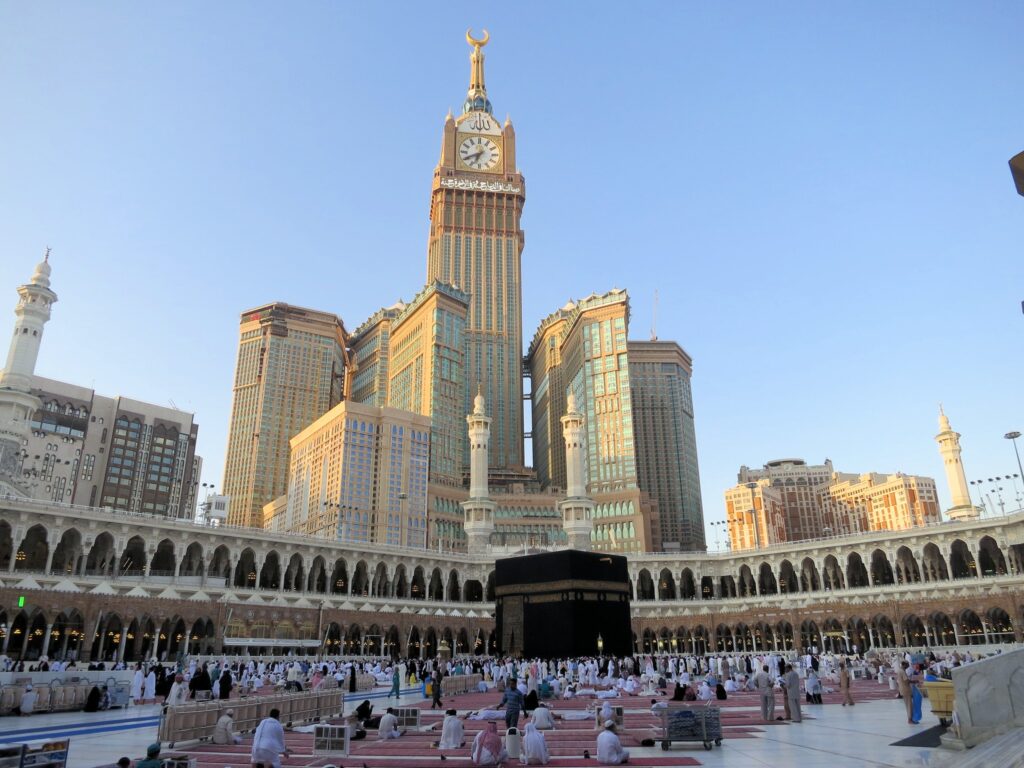
Al-Haram Mosque, which is also called the Great Mosque, was built over several centuries, beginning in the 7th century AD, and became world famous due to its location within the main Islamic shrine (Kaaba-cube). Occupying an area of more than 357,000 square metres, it has more than forty entrances to accept the maximum number of believers. In a period of major events happening here by crushing, so choose where to go to see this attraction Saudi Arabia, need to carefully.
2. Abraj Al-Bait Towers, Mecca
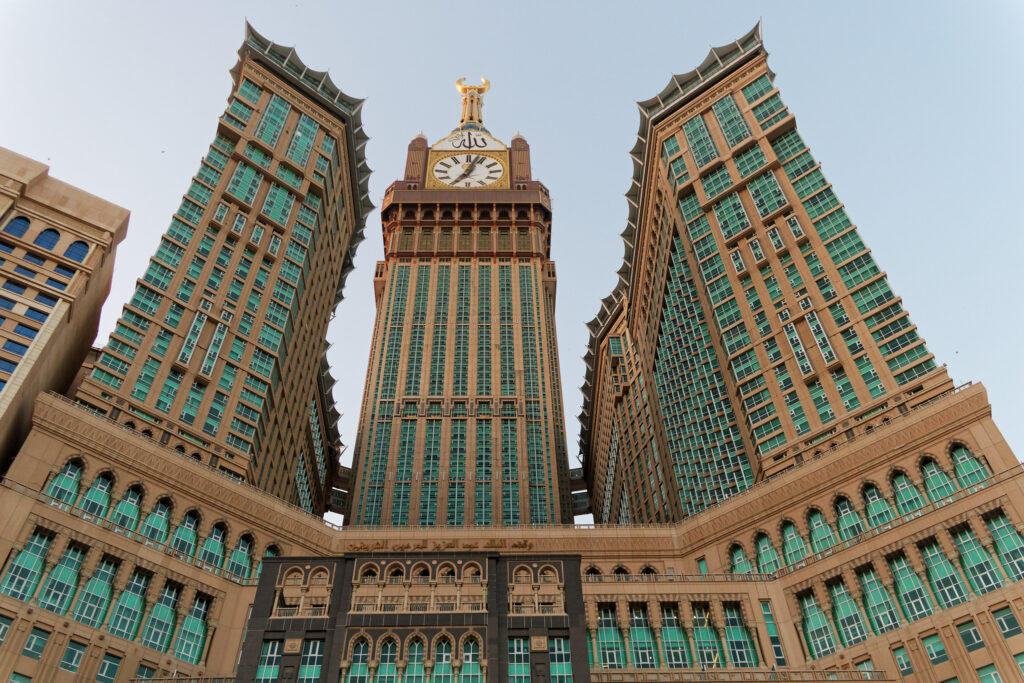
The Abraj Al-Bait is a complex of buildings located in the centre of Mecca in Saudi Arabia. It is the largest building ever constructed in the world, the tallest building in Saudi Arabia and the third tallest skyscraper after the Burj Khalifa and the Shanghai Tower. The structure is located across the street from the entrance to the Masjid al-Haram, inside which is the Kaaba, considered by Muslims to be the holiest place in the world. For this reason, the Abraj al-Bait has a prayer space that can accommodate approximately 4,000 people. In addition, the highest tower contains a five-star hotel to accommodate the more than two million pilgrims who participate in the Hajj each year.
3. Al Rahma Mosque, Jeddah
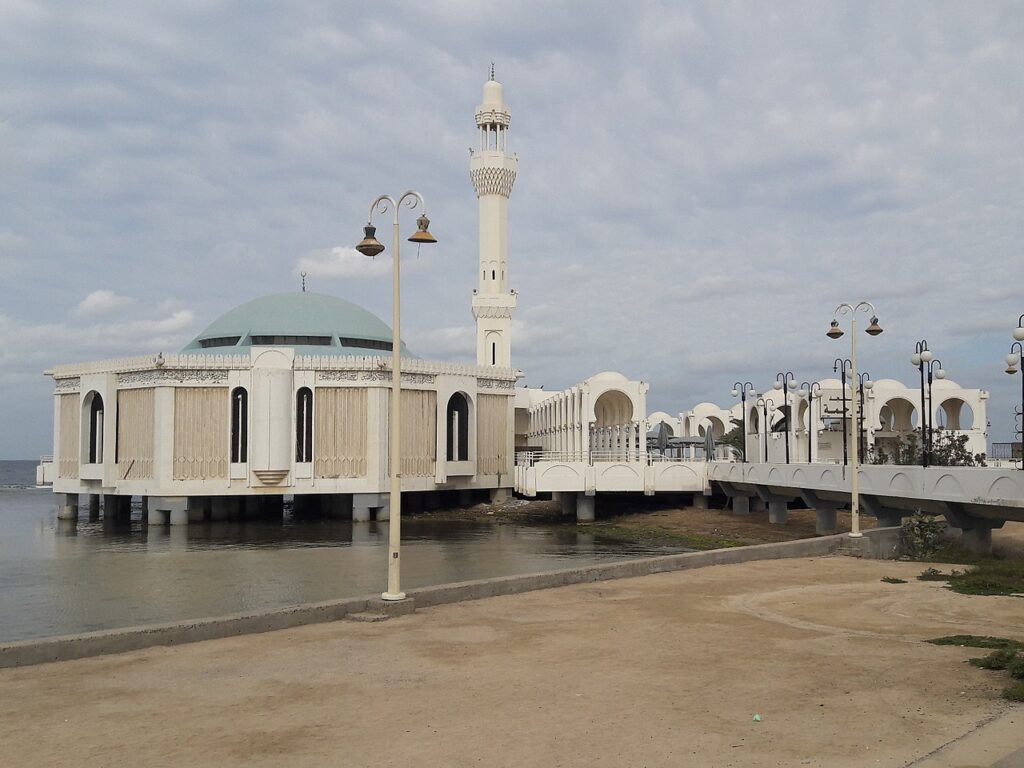
This mosque in northern Jeddah sits on stilts and seemingly floats on the Red Sea. Visitors come to stroll through the open courtyard and enjoy the refreshing sea breeze, especially at sunset. The mosque is equally impressive inside, where modern twists on classical Andalusian patterns decorate the main hall and a beautiful dome sits in the centre above a ring of stained-glass windows. When the sun is shining, it’s as if the dome is floating too. Muslims and non-Muslims wander throughout the day, though it’s best to avoid prayer times if you’re not Muslim.
4. Masmak Fortress, Riyadh
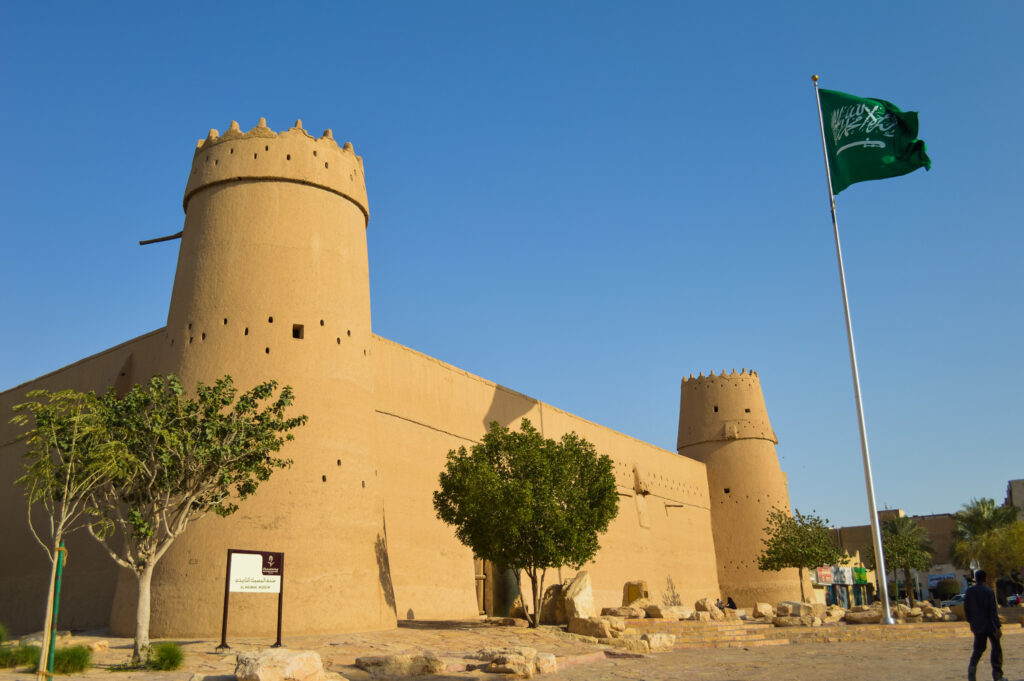
Masmak Fortress is a fortified complex built in 1865, which was transferred to Abdul-Aziz (the country’s first ruler) in the 20th century and is considered one of the most visited places in the capital. In addition to the preserved ancient buildings, Riad guests can learn more about the city’s history through museum exhibits, and a mosque is equipped for orthodox Muslims.
5. Elephant Rock, Medina
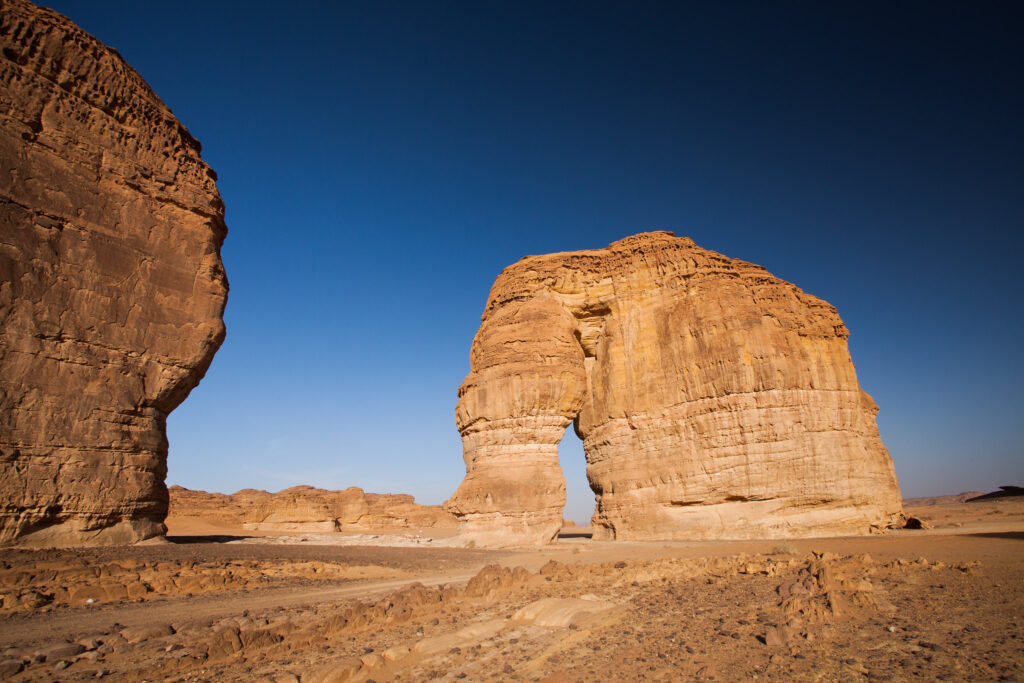
Elephant Rock is a spectacular rock. One of the most iconic images of Al Ula, isolated in the middle of the desert, with an arch that creates an elephant-like silhouette (hence the name). Known in Arabic as ‘Jabal Al Fil’, it is notable not only for its curious elephant-like figure marching through the desert, but also for its enormous size (52 metres). It is a good example of how nature takes its chisels (water and wind) and manages to create masterpieces.
6. Yanbu Lake, Yanbu
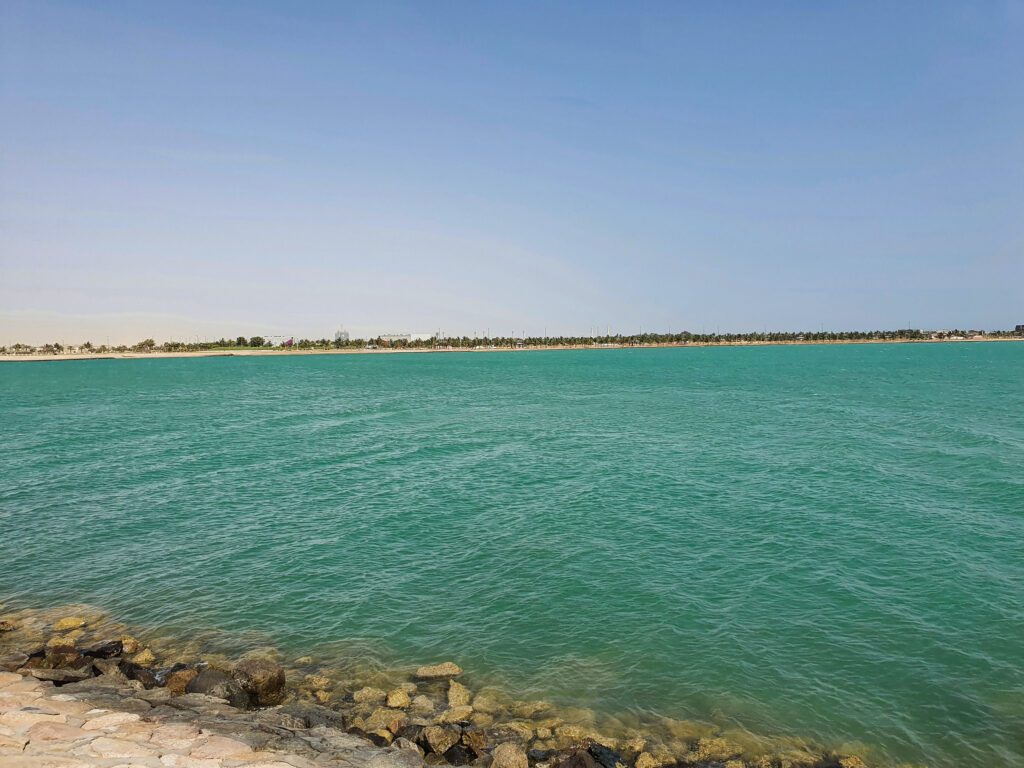
Yanbu Al Bahr which means “spring by the sea”. It is located in the Province of Medina and has the second most important port on the Red Sea after Jeddah in western Saudi Arabia. Within the Yandu Park there is a small artificial lake, a fountain, a lot of vegetation and a playground for children. It is located in one of the affluent southern suburbs of Yanbu. It is a popular place for picnics, jogging, and children to run around on the grass. You can enjoy feeding the ducks on the lake, watching the sunset and enjoying the arrival of the white herons, which perch in the trees, along with a host of other birds. The park is decorated with lights that dazzle at night.
7. Al Fanateer Beach, Ash Sharqiyah
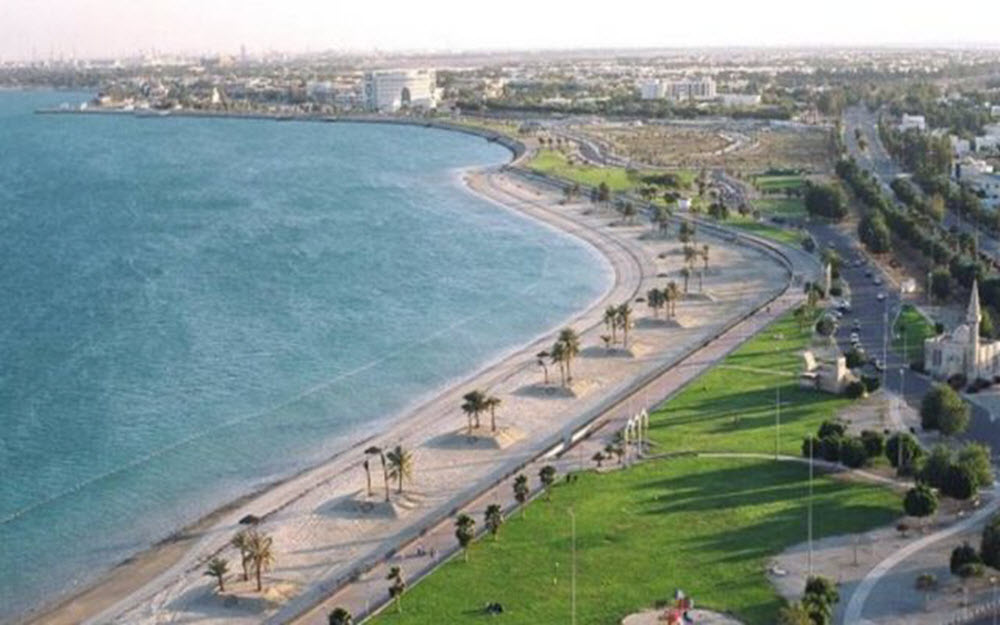
Al Fanateer is a public beach with some rules. Women are not allowed to wear bikinis, while men must wear shorts and T-shirts. The beach is visually divided into several zones: Traditional, Family and Youth. All are equipped with toilets, showers and changing rooms, and the Muslim quarter has prayer booths and a restaurant serving halal food. The beach is free for all and visitors can surf the internet. Guests can use umbrellas, parasols and sun loungers, enjoy water attractions, hire boats and sports equipment and much more. Near the beach there is a large picturesque park with fountains, exotic palm trees, unique flower beds and emerald green lawns. Here you can grill, take part in sports activities, visit the children’s playground and enjoy the weather in one of the many restaurants.
8. Jeddah Waterfront, Jeddah
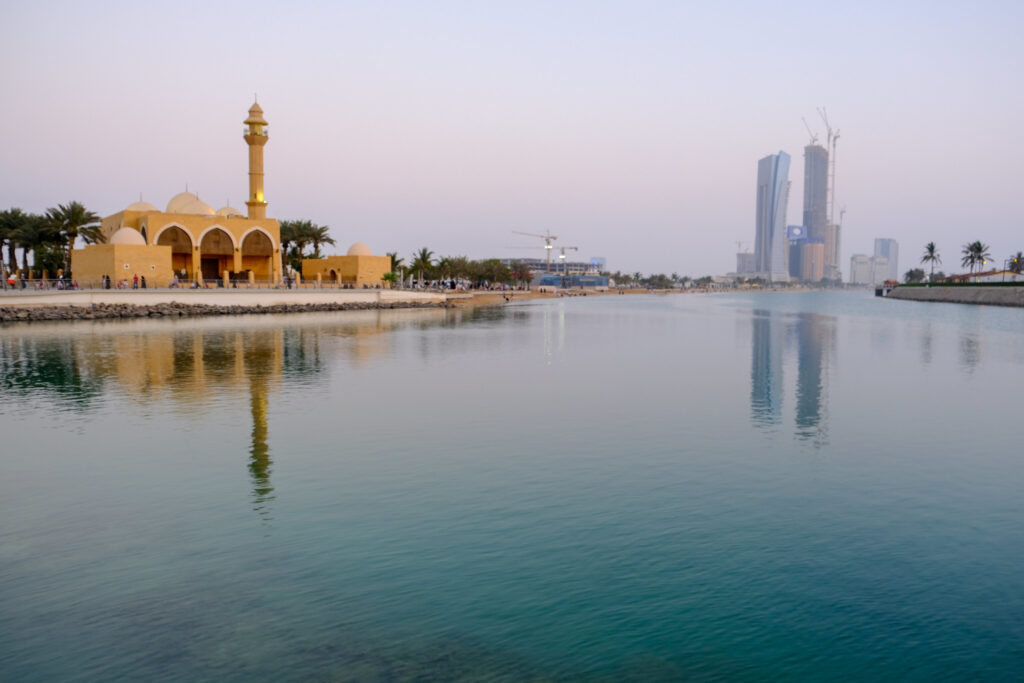
The sea has always been Jeddah’s main attraction, so the Jeddah Promenade was built right down to the Red Sea as a place for families to relax and have fun. Inside the embankment is the longest promenade in the country. Bicycles are available for hire and visitors can ride along the edge of the bike path. There are also several restaurants, cafes, etc. Tourists can enjoy fishing, water skiing, sailing and other entertainment. For art lovers, there is an open-air museum on the promenade with collections ranging from traditional Arabic to abstract and monumental sculptures.
9. Al Qarah Caves, Al Ahsa
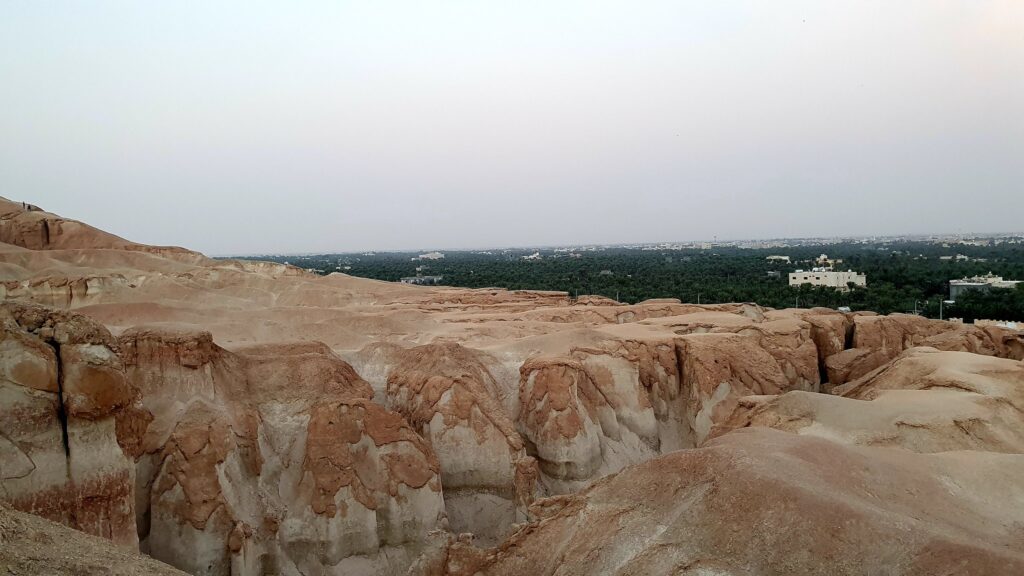
It is one of Saudi Arabia’s main attractions. These caves are the result of a phenomenon known as subaerial weathering, in which rain and rivers shape the limestone rock rather than groundwater. The ghostly cave system within al-Qarah Mountain was registered in 2018 as a Unesco cultural heritage site. It is a set of natural caves, carved by wind and water erosion, which require a bit of climbing to enter, but are well worth the effort…. Especially in summer, as they are significantly cooler than the heat outside.
10. Wahbah Crater, Hejazi

It is located on the plateau of Harrat Kishb, surrounded by arid desert, with the peculiarity that an unusual vegetation of palm trees and other shrubs flourishes inside, and where you can even find some springs. Water is one of the reasons for the crater’s existence, and it is considered to be the largest of its kind in the Middle East. The interior of the Al Wahbah crater is covered with sodium phosphate crystals that mix in winter with the scarce water that accumulates from rainfall. The salts give it the appearance of a huge lake of white and earthy colours, which together with the surrounding vegetation make it a strange and attractive oasis in the middle of the desert.
11. Edge of the World, Riyadh
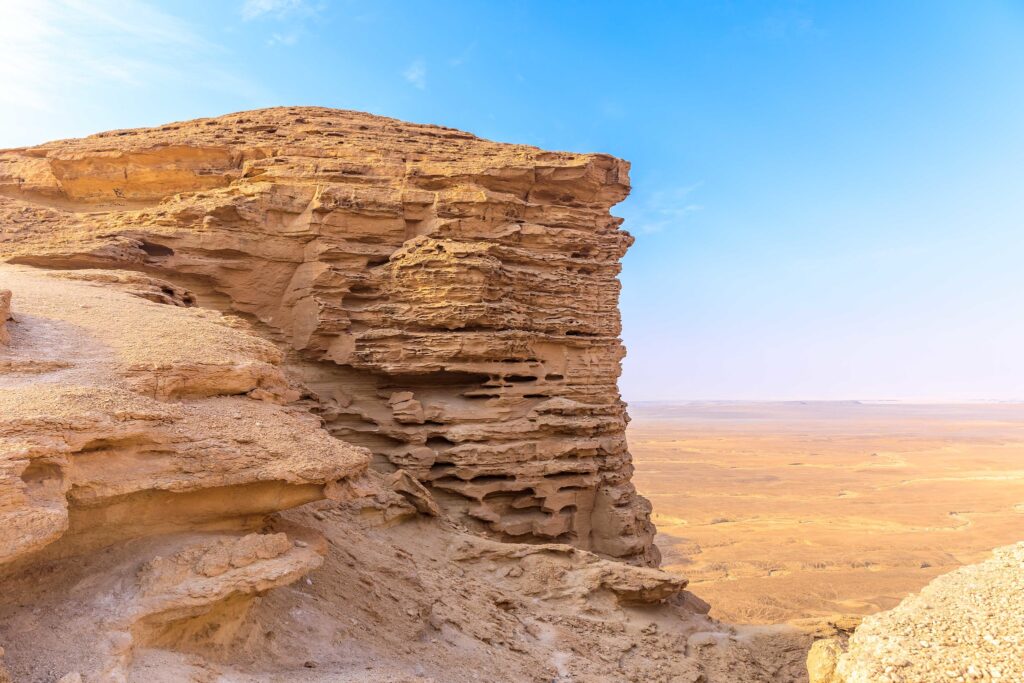
The Edge of the World Saudi Arabia (Jebel Fihrayn) is an unexpected and dramatic geological wonder in the rocky desert northwest of Riyadh, Saudi Arabia. The site earned its nickname because from the top of the escarpment, there is an uninterrupted view of the horizon. These cliffs rise dramatically from the desert, stretching skyward like a great natural wall. When you stand on top of them and look out to the horizon, you have a privileged view of the sky as it seems to melt into the barren land.
12. Half Moon Bay, Eastern Province
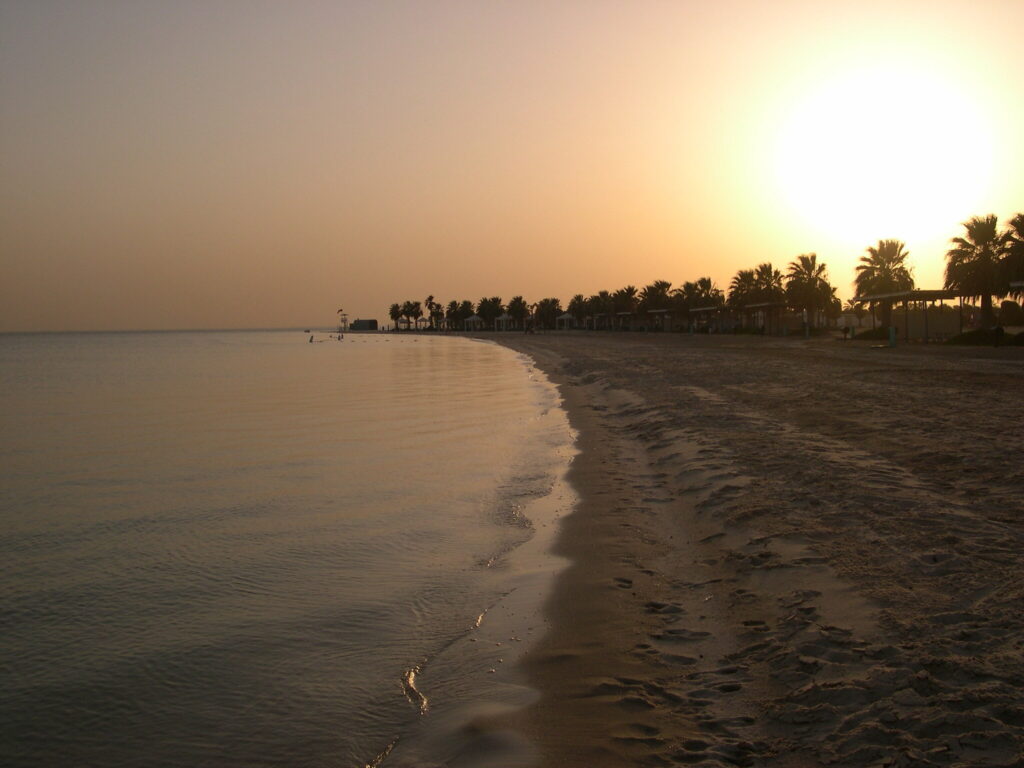
A short distance south of Dammam lies Half Moon Bay, once a transit point for Arab traders from the Gulf region. Thanks to the bay’s calm waters, which are only seven metres deep, it has become a family holiday destination. On warm winter days, it’s a great place to learn to scuba dive or just to recover your legs.
13. Asir National Park, Asir
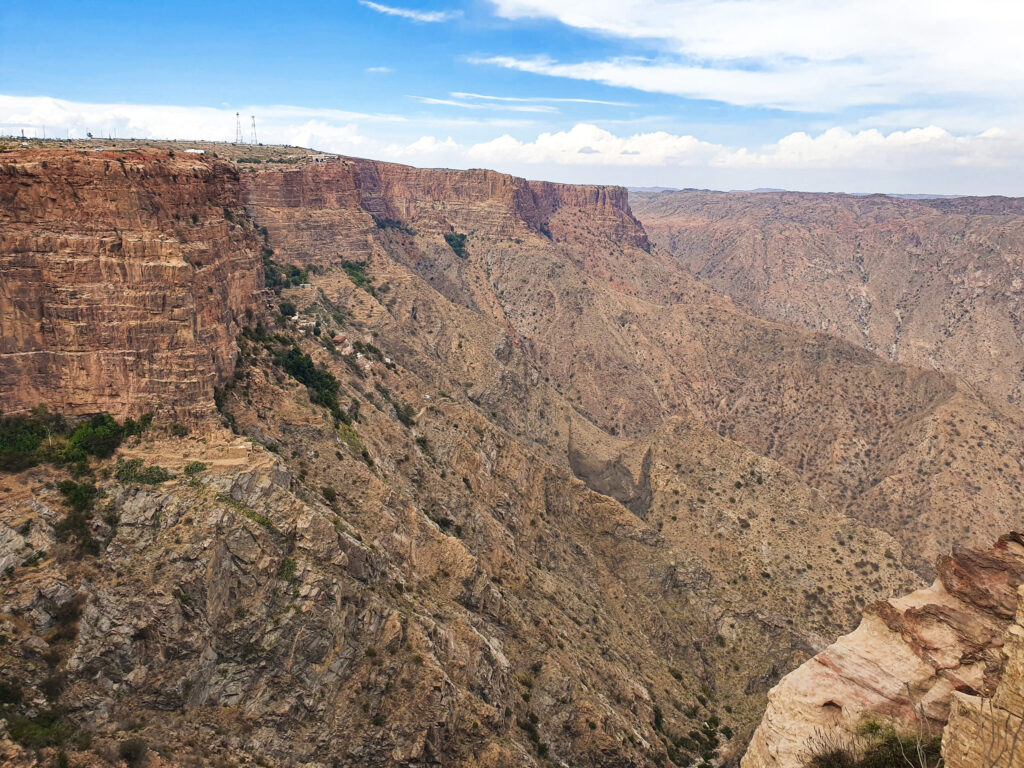
Asir National Park is consistently included in the list of attractions in Saudi Arabia as one of the few territories with preserved flora and fauna. The accessible entertainment for travellers is walking through the vast territory of the park, during which you can see the rarest animals (including the Nubian ibex and gemsbok) and plants in the natural habitat, barbecue and picnic areas, playgrounds for children and athletes. Separate areas are designated for camping, so you can come here for a few days. The reserve has been operating since the eighties of the last century and is fully funded by the state.
14. Yellow Lake, Al-Hasa
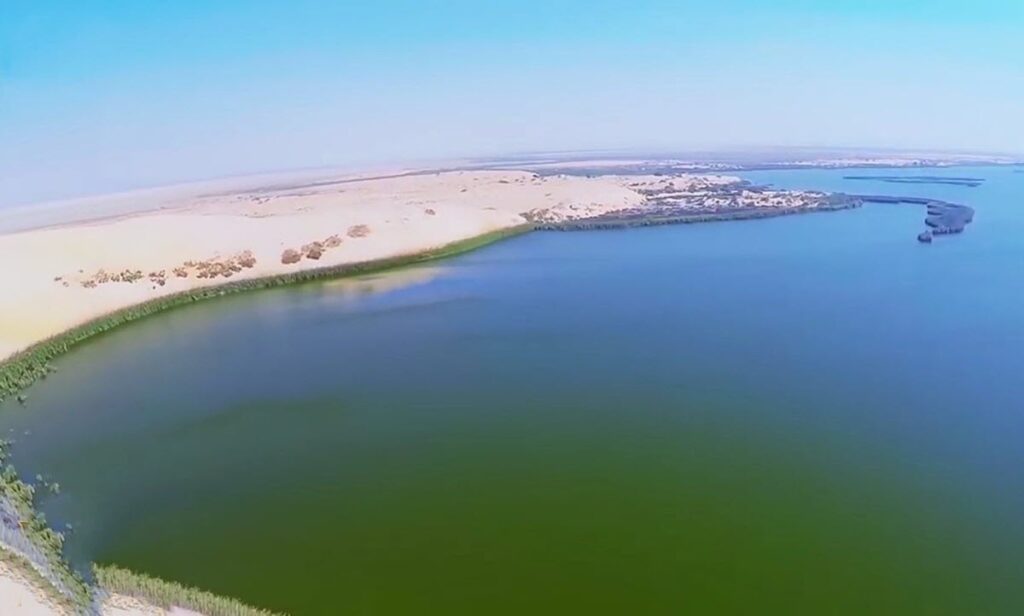
Also known as Lake Al-Asfar, it is a shallow lake located in the humid eastern part of Saudi Arabia. The lake is a spectacular sight surrounded by dunes that make it unique. The lake is surrounded by dunes, vegetation and flowing water, making it look like something out of a postcard. The area has become a habitat for many birds and animals. During the breeding season, wintering birds come to the lake, which is a sight to behold. Although the climb to the top of the dunes can be challenging, the view from there is tranquil and spectacular. For those looking to experience winter wilderness hiking, a trip to this lake is ideal. The lake is also an ideal place for camping or stargazing, but visitors should be prepared as there is a lack of facilities in the area.
15. Al Masjid an Nabawi, Medina
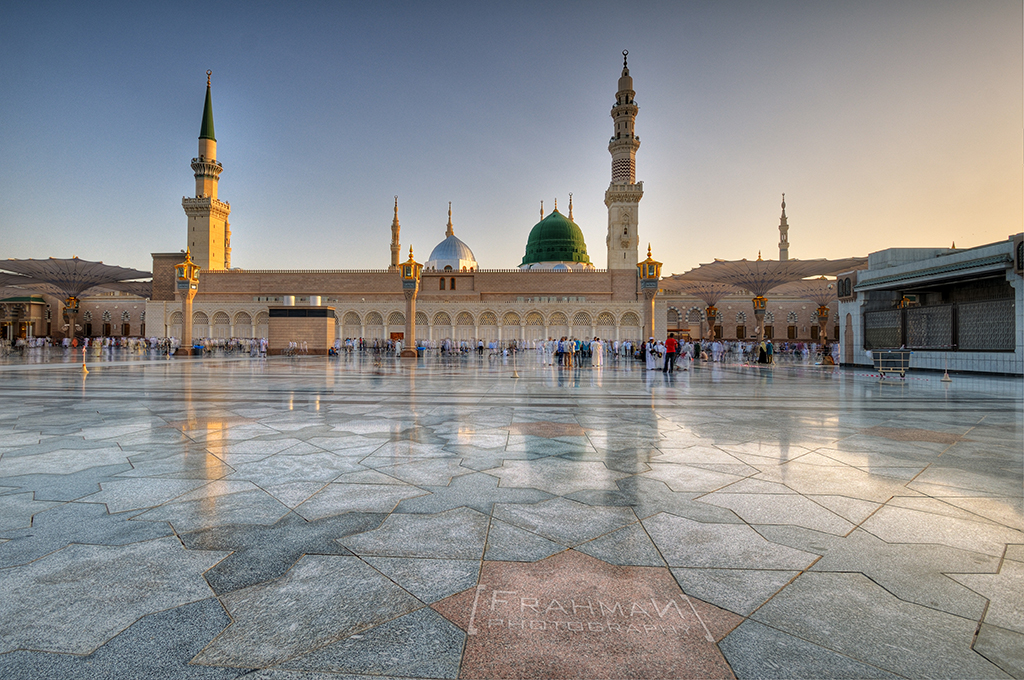
Al-Nabawi Mosque is the second most important temple for followers of Islam, whose creator is considered the Great Prophet. To see this Saudi Arabian attraction you will find the burial place of Muhammad and numerous minarets over a hundred metres high. In addition, two of the country’s caliphs are buried here. The mosque is designed for the simultaneous prayer of 600,000 Muslims, and during the Hajj the number increases to one million. A design feature is the open courtyard in the shape of a rectangle. The construction principle of the sanctuary became the basis for architectural projects of other mosques. In the past, not only prayers were held here, but also court audiences, public gatherings, Islamic lessons and special occasions.
If you loved this article or found it useful, don’t forget to visit and subscribe to my social media for more useful content. Follow us on Google My Business, YouTube, Instagram, Pinterest, Twitter, Facebook or Reddit and subscribe to our receive our free website content.

